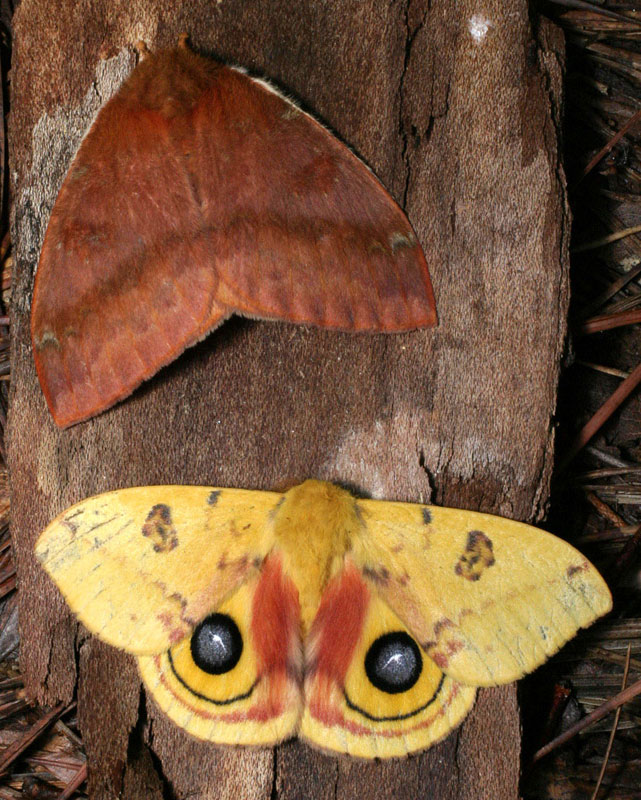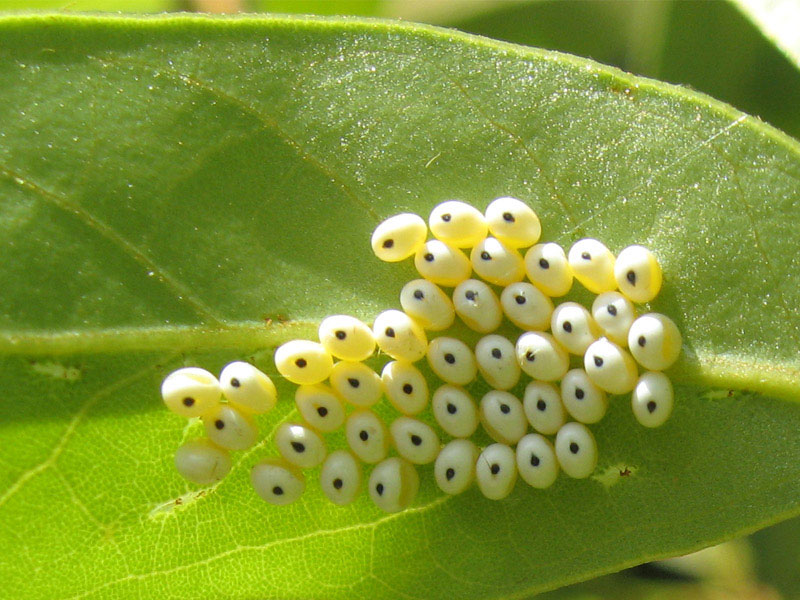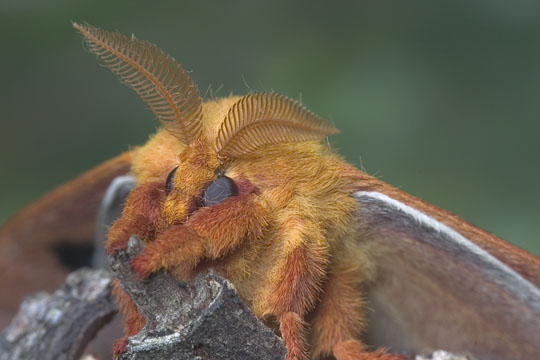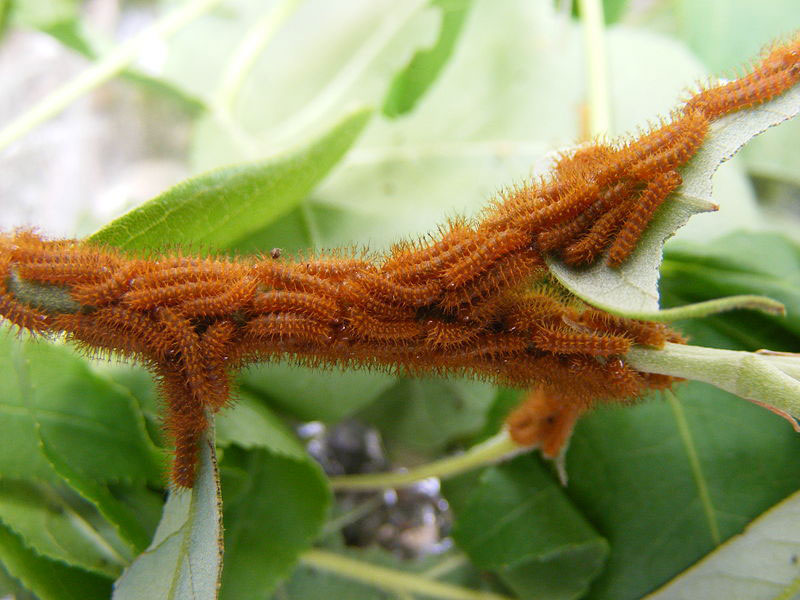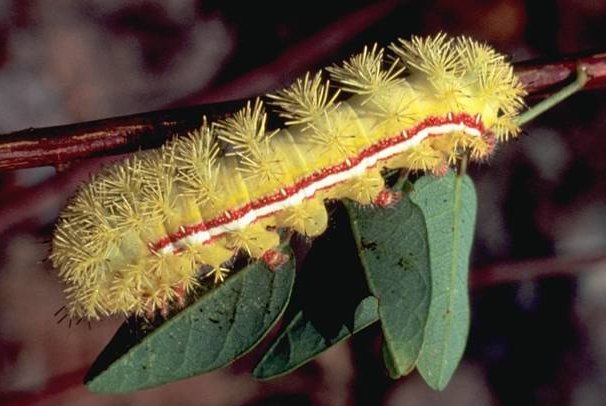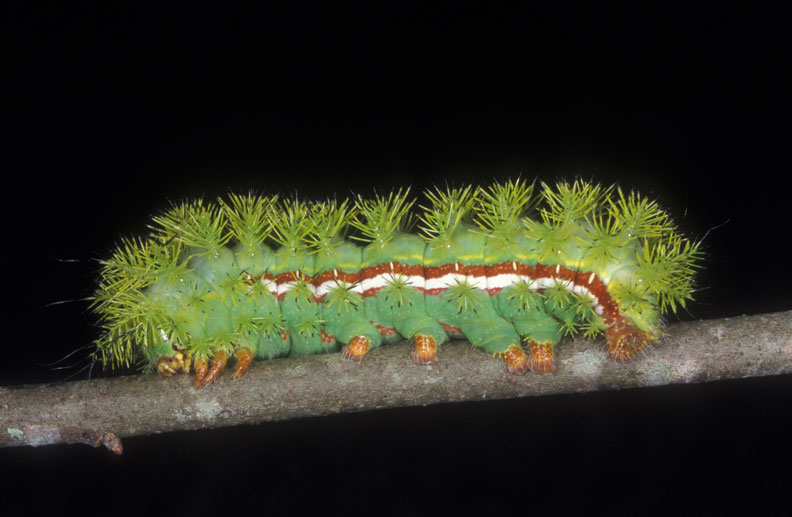Io Moth
|
adult; Photo © Alan Chin-Lee, www.alanchinlee.com |
|
adult female (top) and male (bottom); Photo by Patrick Coin |
|
eggs; Photo by Gary Foster |
|
adult male, face view; Photo © Alan Chin-Lee, www.alanchinlee.com |
|
first instar larvae; Photo by Shawn Hanrahan, Texas A&M University |
|
middle instar larva; Photo by L.L. Hyche, Auburn University, Department of Entomology & Plant Pathology |
|
late instar larva; Photo by Lyle Buss, University of Florida |
Scientific name
Automeris io (Fabricius)
Family
Saturniidae
Description
Adults: Wingspan 5-8.7 cm; male forewings usually yellow, but may be red-brown, female forewings brown; hindwings of both sexes are yellow to brownish orange with yellow or orange margins and a large black and blue eyespot with a white dash in the center. Antennae of males are quite large and feathery compared to the females.
Larvae: Length longer than 2.5 cm; spiny; early instars red-orange, middle instars yellow (later turn green) with red and white lateral stripes. Larvae are highly gregarious, often found in quite large groups.
Eggs: Diameter about 1.5 mm. Have a micropyle rosette that turns black as eggs develop; usually laid in clusters of more than twenty.
Diagnostic features
Adult: Wingspan 5-8 cm, hindwing with large black to bluish eye spot with some white in center. Automeris io is sexually dimorphic; males with bright yellow forewings, body, and legs; females reddish brown forewings, body, and legs. Adults have vestigial mouthparts and do not feed.
Larvae: Spiny; first instarinstar:
stage in an insect's life history between any two molts. The newly hatched insect is the first instar, and the adult (imago) is the final instar.
orange in color and gregarious; late instars yellow to green with red and white lateral stripe, usually solitary.
Distribution
Native: Eastern North America, north to southern Canada, west to southern Arizona and south to Central America.
Hosts
Palms: a variety of palms
Other: a wide variety of plants, including rose, cotton, hibiscus, azalea, willow, and clover, oaks, and other hardwoods
Additional comments
Io moth larvae are leaf feeders, gregarious in early instars then become solitary as they develop. They make a simple paper-like cocoon. Usually one generation in northern areas, 3-4 generations in Florida.
Io moth larvae can have three discrete color forms as they progress through their instars: yellow, blue-green, and green.
Io moth larvae have two types of poison spines. Remedies for relief of urticatingurticating:
stinging
patin include removal of inserted spines by the use of adhesive tape, followed by ice compacts, mentholated vaseline and/or an antihistamine.



